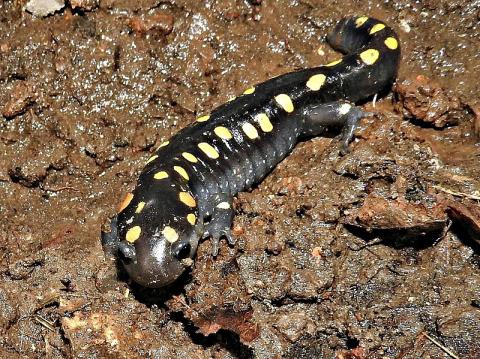What is The Big Night in Spring and How Can You Help Amphibians During This Time?
Have you ever heard the term Big Night and wondered what it refers to? In spring, amphibians migrate to vernal pools for breeding. There are specific weather conditions that determine when this migration occurs and there are several challenges that amphibians face on their journeys. Humans can help by joining local community science groups in safely moving amphibians across roads.
The Right Weather Conditions
Spotted salamanders, wood frogs, spring peepers and other amphibians will venture out from the woods to make their way to vernal pools in the spring on warm, rainy nights. The nighttime temperature will be above 40° F and the ground will have thawed. Although the term Big Night is used, there are multiple nights when this occurs. Depending on the weather and the environment, the timing of migration can vary throughout New Hampshire. It is usually sometime in March, April or May.
The Importance of Amphibians
Amphibians are important members of New Hampshire ecosystems. They are indicators of ecosystem health, they eat invertebrates and they serve as prey for many animals like hawks, foxes and coyotes.

Spotted salamander
The Challenges of Migration
When migrating from woods to wetlands, amphibians face logistical challenges — most notably, busy roads. Frogs and salamanders are relatively small and can be hit by cars. To aid amphibians, tunnels and culverts can be designed to enhance their ability to cross the road. Read more about effective road crossings.
The Role of Community Science Groups
Community science groups can help by assisting amphibians while they are crossing roads. Volunteers can also collect data and raise awareness of safety during a Big Night, like encouraging people in their community to drive less after sunset.
The Harris Center for Conservation helps organize Salamander Crossing Brigades in the Monadnock Region. For up-to-date information about a possible Big Night, you can view their Salamander Forecast tool, which tracks weather conditions and provides explanations regarding the probability of a Big Night.
Article reviewed by Haley Andreozzi, Extension State Specialist, Wildlife Conservation


